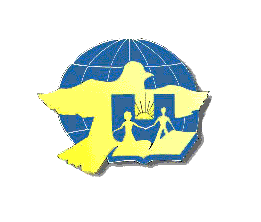A chapter of Norway's history has resurfaced with the discovery of the wreck of a slave ship off its coast.
Were Scandinavia's slave traders just twisted hippies? silly question, of course. Yet the words "peace" and "love" were the only two found in the wreck of the Fredensborg one of the ships chartered by the Royal Danish West Indies and Guinea Company. They appear on a seal around an image of dove with an olive branch in its beak.
Almost a message to future generations.
The students in Norway belonging to UNESCO's Associated Schools Project (4,250 schools in 137 countries) have received the message loud and clear. -They decided to make the seal the logo of the Norwegian contribution to the Slave Route project they are involved in," says Mari Hareide, secretary-general of the Norwegian National Commission for UNESCO, who is coordinating the project, which was started after the discovery of the Fredensborg.
A TRICONTINENTAL TRADER
This ship is the reason for Norway‘s interest in the Slave Route. It sailed from the kingdom of Denmark (which then included Norway) to the Gold Coast and the Virgin Islands in the Caribbean (sold to the United States in 1917 for $25 million). It left with European goods, used to buy slaves in Africa who were then brought to the island plantations and exchanged for colonial products. To return to Copenhagen, it had to first go up to Norway to benefit from the winds. But in 1768, it sank in a storm off the coast of Norway with a cargo of sugar rum, elephant tusks and two slaves."
Three divers identified the wreck in September 1974 and brought up the tusks. "It is one of the best documents on slave ships ever found. We have all the records in Denmark. So we know exactly who was on board, how many trips were made and more." The divers were so impressed that they did further research, which last year resulted in an exhibition and two books, one of them in cartoon form. Norway has also earmarked three million dollars over five years (1997-2001) for the Slave Route project, which is exceptional for a country which only played a small part in the trade compared to other European nations.
"We organized two seminars on the slave trade and invited teachers, students and university people from Ghana and St Croix, the biggest of the Virgin Islands to come and stay with Norwegian families" says Hareide. "The first part of the project involves using the Associated Schools to spread more information about the slave trade in the classroom and encourage children to talk about it and come to terms with it. It is also a way of learning about other societies. A school in St Croix is corresponding by email with one in Norway to write a little newspaper together It's like a catharsis. Until very recently, we never dared to see what the slave trade really was. We also want to make young people look at modern forms of slavery. "
Adults have a lot to learn too from these exchanges. "A Ghanaian teacher who was here last April is still in touch with her Norwegian colleagues." She wants to take advantage of the International Year of the Ocean to study sea routes at the time of the slave trade and their effects on human settlement. Contacts between university teachers are also fruitful. "At one of the two seminars I was invited to, " says Ghanaian historian Akosua Perbi, "I told the real story of the slave trade in Ghana. The Norwegians are going to use some of that information for their teaching materials. I was also able to correct a few mistakes in their cartoon book. "
Perbi also made new friends. "In Norway, I met George Tyson, a colleague from the Virgin Islands, who invited me to present my work on internal slavery in Ghana. I went for the first time in January. It was refreshing. Actually, I was touched. I've been teaching African history for the past 17 years and for the first time I got to experience the thing that I had read about. In the Akan language, a slave is called 'donko'. When I said this in St Croix, an elderly lady sang a song to me in English with the word in it. She was fascinated when she learned what donko meant. Another teacher, from the island of St John, told me that where he came from, cola nuts were called 'bisaa'. Another Akan word. And the food! I ate a chicken soup that tasted just like it does at home. "
Through Norway, Africa is discovering America. Such cultural exchanges will increase in the course of the Norwegian project, which includes the holding of tricontinental festivals. Another way is by restoring cultural monuments. Some Ghanaian coastal forts, which still have Danish names, may be restored and become places of remembrance. "We must accept the past instead of trying to forget it," says Perbi.
In St Croix, attitudes are changing. After repressing their history, the islanders are now keen to discover it and are doing genealogical research. "To be the descendent of a slave has never been something to be proud of. But to have survived the crossing, to have freed oneself and to have begun a new life is something honourable. We have to build this sense of pride. That is what many of us are working on now, "

